OK, so you have a self-managed super fund (SMSF) and are comfortable using the cash in it to leverage into a loan to buy property. You know that the super rules allow this if a bare trust is set up as the buyer of the property. You have found a property and want to sign a contract.
How do you put it into practice? This article looks at the pointy end of the process – setting up the required buyer structure, entering into a contract, and taking out a loan.
What documents are involved for the bare trust?
The concept has been around for a few years now, but there is still no single established name for a Bare Trust document. They have differing titles depending on who is preparing them: Instalment Warrant, Custodian Deed, Bare Trust Deed, Property Trust to name a few. These are all the same thing.
I assume that you have already established an SMSF and the company which should be the trustee of the SMSF. You will therefore already have a company register of the corporate trustee and a trust register of the SMSF trust.
Establishment of bare trustee company
Next, you should set up a separate company to be the trustee of your bare trust. Having a company means paying a small annual government registration fee, and maybe an annual fee to your accountant if your accountant is the company’s registered office. However, as the company will be a bare trustee only, it shouldn’t need to lodge a tax return.
It is not legally required to have a company as trustee of the bare trust, but it is strongly recommended. If an individual or individuals are the trustee, the death, bankruptcy, divorce or exit from the fund of the trustee will create administrative problems. A company as trustee will usually ensure that any deaths or underlying membership of the fund will not affect the property owned by the bare trust.
If you already have a company, you can use it as the trustee of the bare trust. A company may be trustee of more than one trust. However, the super rules require you to have separate bare trust documents prepared for each property which the bare trust buys.
Establishment of bare trust
The main document is the Instalment Warrant, Custodian Deed or whatever it is called. This is teamed with a series of shorter but essential documents which I usually call ancillary documents.
What does the instalment warrant say?
The super rules require that the bare trust provide that:
- The property is held on trust as bare trustee only
- The SMSF may direct the bare trustee to transfer the property to the SMSF
- The bare trustee must act on SMSF’s directions.
The bare trust is established by a Settlor, who is usually an acquaintance, lawyer or accountant who knows the parties. A quaint but essential requirement is that the Settlor provides a gift of a small amount such as $5 or $10 to the bare trustee to establish the bare trust. If this money isn’t actually paid, the bare trust is invalid. The Settlor can’t get the money back either; it sits in the bare trust’s books as an asset.
The ancillary documents include resolutions and authorisations by the SMSF trustee and the bare trustee that the bare trust be established and the property purchased. These resolutions and authorisations are also necessary in order to comply with the super rules.
The SMSF can require the property to be transferred to it by the bare trustee at any time, but only if there are no borrowings against it. In practice, the property is usually sold before the loan is paid out, so the bare trustee will still be the owner and will be the seller in the sale contract.
If the property is transferred to the SMSF, there is no duty payable on the transfer.
The Loan
There are two types of loans which are seen in this area:-
1. Third party loan – this is where a bank or other financier is lending money to the SMSF
- There will be a loan agreement between the Bank and the SMSF
- The SMSF is the Borrower in the loan agreement
- The Bank will requires mortgage security – as owner, the bare trustee is the Mortgagor
- The Bank will prepare the loan and mortgage documents
- Either the Bank or the SMSF will prepare the bare trust documents, depending on the Bank’s policy.
2. Related party loan – this is where a related entity is lending money to SMSF
- The loan agreement is between the related entity and the SMSF
- The SMSF is the Borrower in the loan agreement
- Usually the loan is unsecured unless the related entity wants a mortgage for some reason
- The SMSF and Borrower arrange all documents
- The interest rate must be commercial, as if it were an arms’ length loan.
The Purchase Contract
- It is essential toget the bare trust entity set up before going to contract. Too often this issue is left to the last minute (for example, when sitting in the real estate agent’s office!). If you buy the property in one entity and then seek to change it later, you could be facing a bill for double duty.
- The SMSF must pay the deposit
- The Contract will usually contain common conditions such as finance approval, and building and pest inspections. If the SMSF is borrowing from a Bank, the contract must be subject to finance approval as the Bank will want to approve the contract before giving approval and preparing loan documents.
What are the costs?
The costs will include legal fees for setting up the bare trust and bank fees for reviewing the documents. Conveyancing costs will also be incurred.
On top of this are the usual outlays such as loan establishment fees, duty and Titles Office registration fees.
Should I go ahead?
It does seem like a lot of effort to go to for a SMSF to be able to borrow to buy property. However, in my experience, if the fit is right then clients are happy that they made the effort. Of course, you should always get early professional advice before going ahead.
If you have any questions relating to borrowing through your super, please don’t hesitate to contact me.
The information provided in this article is for general information and educative purposes in summary form on legal topics which is current at the time it is published. The content does not constitute legal advice or recommendations and should not be relied upon as such. Whilst every care has been taken in the preparation of this article, Wills, Estates and Probate Lawyers (WEP Lawyers) cannot accept responsibility for any errors, including those caused by negligence, in the material. We make no representations, statements or warranties about the accuracy or completeness of the information and you should not rely on it. You are advised to make your own independent inquiries regarding the accuracy of any information provided on this website. WEP Lawyers does not guarantee, and accepts no legal responsibility whatsoever arising from or in connection to the accuracy, reliability, currency, correctness or completeness of any material contained in this article. Links to third party websites or articles does not constitute any endorsement or approval of those sites or the owners of those sites. Nothing in this article should be construed as granting any licence or right for you to use that content. You should consult the third party’s terms and conditions of use in relation to any third-party content. WEP Lawyers disclaims all responsibility and all liability (including liability for negligence) for all expenses, losses, damages and costs you might incur as a result of the information being inaccurate or incomplete in any way. Appropriate legal advice should always be obtained in actual situations.


